Mastering CRO Analysis: Strategies for Conversion Rate Optimization
According to a McKinsey survey, data-driven organizations are 23 times more likely to acquire customers, six times as likely to retain customers, and 19 times as likely to be profitable.
This highlights the critical role of CRO (Conversion rate optimization) analysis in leveraging data to fine-tune your digital platforms (websites, mobile apps), ensuring they attract visitors and successfully transform them into customers, boosting conversion rates.
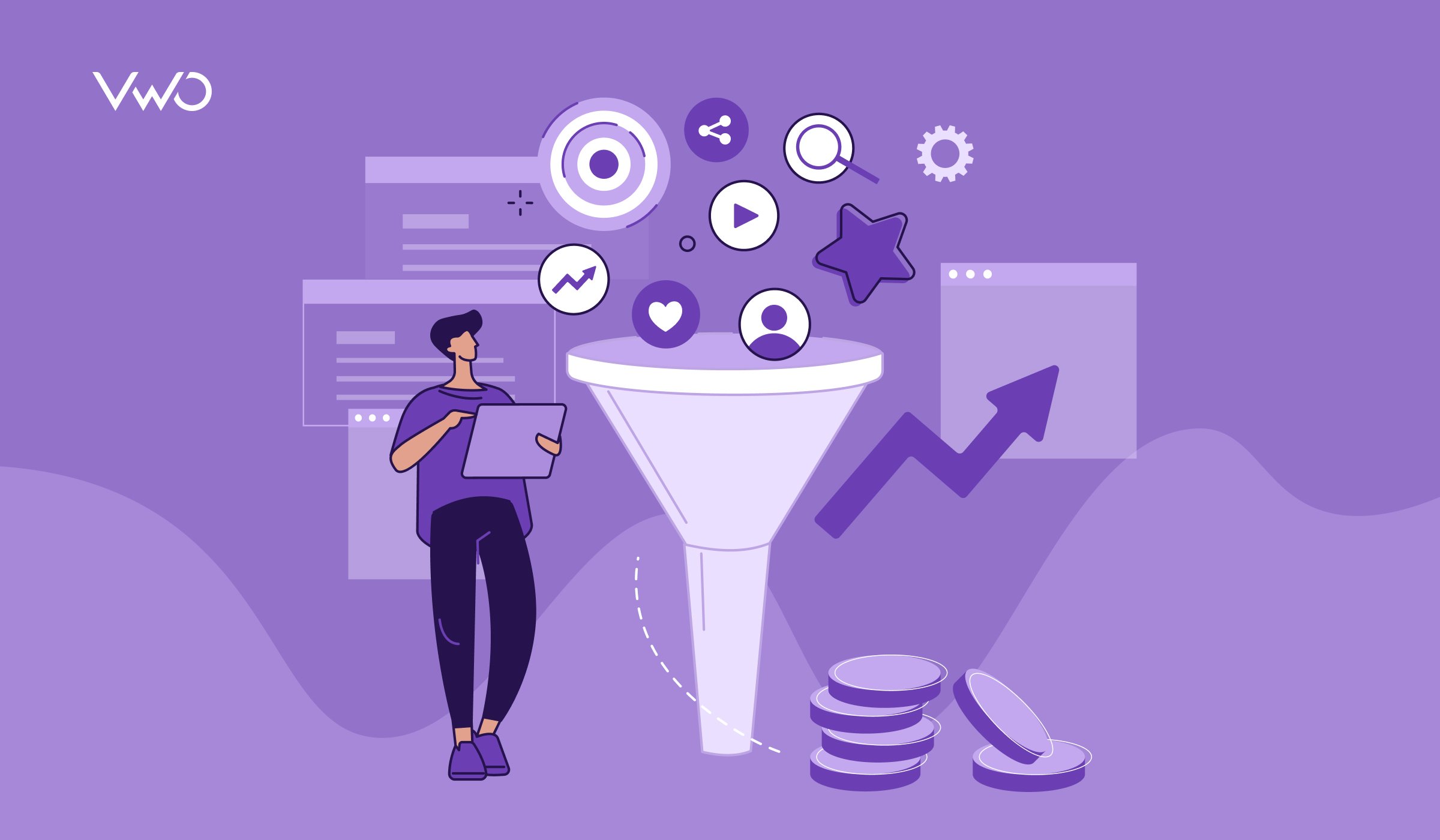
What is CRO analysis?
Conducting a conversion rate optimization analysis involves systematically examining your website to identify what motivates visitors to take desired actions, like signing up for newsletters, filling out contact forms, or purchasing products. It’s like solving a puzzle where each piece is a part of your website. Putting it together correctly shows how to turn visitors into loyal customers.
It is a continuous effort to understand user behavior, website performance, and how effectively your site converts visitors into customers. The journey begins with collecting and analyzing quantitative and qualitative data to identify areas for improvement.
By analyzing your site’s design, content, user navigation, and technical aspects, you can identify obstacles and opportunities to increase conversions. CRO analysis combines data with creative thinking to find what resonates with your audience and how to improve their experience, boosting the average conversion rate.
Why analyze your CRO?
Exploring Conversion Rate Optimization (CRO) analysis provides insights beyond basic metrics, uncovering what truly resonates with your audience. This isn’t just routine maintenance; it’s a strategic approach to enhancing your website’s conversion rate.
The advantages of conducting a thorough CRO analysis are diverse. They impact various aspects of your business, from revenue generation to enhancing user satisfaction. You’ll gain valuable perspectives that can inform strategic decisions by examining how visitors engage with your site and what drives them to convert.
Let’s explore these benefits and see how they can help shape your business’s stronger, more engaging, and more profitable online presence.
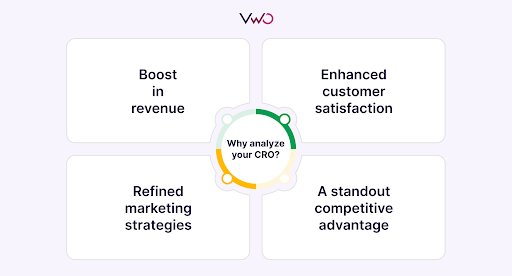
1. Boost in revenue
The most direct benefit of fine-tuning your conversion rate is increased revenue. CRO analytics play a pivotal role in identifying the direct correlation between user actions and revenue, highlighting the importance of optimizing every touchpoint.
2. Enhanced customer satisfaction
Optimizing your website for conversions means prioritizing your users’ needs and experiences. Refining aspects like site navigation, content relevance, and site speed creates a smoother, more enjoyable online journey. This focus on user experience doesn’t just satisfy; it delights, fostering loyalty and encouraging repeat business.
3. Refined marketing strategies
The insights drawn from CRO analysis give you a laser-focused understanding of your audience. This clarity transforms your marketing from a broad, scattergun approach to targeted precision.
With data on what your audience loves, where they hesitate, and why they convert, you can craft messages and campaigns that hit home every time, elevating your marketing ROI.
4. A standout competitive advantage
In the crowded digital marketplace, standing out is crucial to attract customers. With detailed conversion rate analysis, you can outpace competitors by creating a user-friendly website that effortlessly converts website visitors into customers.
What can help you analyze conversion rate optimization?
A structured, data-driven approach to CRO analysis offers clear, actionable insights to bridge the gaps and seize opportunities within your website’s performance and conversion rate. This method enables you to:
- Systematically diagnose the conversion funnel and results page CRO to understand where improvements can be made to boost CRO converts.
- Quantify the revenue impact of optimizations by utilizing CRO analytics dashboards, customizing them to monitor key performance indicators such as conversion rates, bounce rates, and session duration. This data helps prioritize the changes to deliver the most significant financial return.
- Continuously improve conversion rates over time, drawing on heatmaps & session recordings to observe user behavior in detail. These tools reveal where users click, scroll, and exit, offering direct insights into the areas needing enhancement.
- Justify proposed changes with actual data, employing A/B testing and multivariate testing to experiment with different website elements head-to-head and identify what maximizes conversions. This provides clear, data-backed insights into what boosts conversions for stakeholder understanding.
A definitive CRO analysis strategy
Implementing a comprehensive CRO analysis strategy, as outlined below, enables you to systematically enhance your site’s ROI through informed, data-driven improvements.
1. Data collection and segmentation
Data collection and segmentation are the first crucial steps that help you analyze the CRO, allowing for more personalized and effective optimization efforts, leading to a higher conversion rate and improved site performance. This phase involves:
a. Conversion tracking
Implement conversion tracking within Google Analytics to identify how well your site achieves its conversion goals, such as sign-ups or purchases. This insight allows you to assess successful elements and pain points needing improvement.
b. Custom reports
Create custom reports tailored to your conversion objectives. These reports can break down visitor information by demographics, traffic sources, and device type, among other factors. Utilizing these insights gives you a clearer understanding of your target audience, uncovering opportunities to optimize your site to meet your conversion goals.
2. Funnel analysis
At the heart of CRO analysis lies the critical task of evaluating your conversion funnel, where optimizing its performance can significantly boost conversions. The critical steps in this enhancement process involve
a. Conversion funnel analysis
Review your funnel closely to spot where users drop off. Identifying these points helps you understand what might stop them from moving forward.
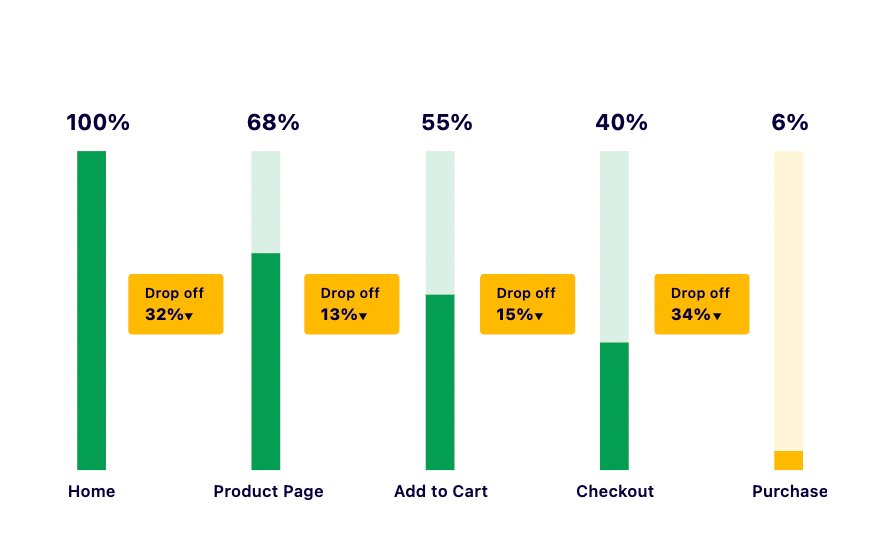
By making targeted improvements at these stages, you can help smooth the path for users to complete their journey, aiming to reduce the number of drop-offs and improve your site’s effectiveness in securing conversions.
b. Focus on small and big wins
Pay attention to micro and macro conversions, as they both play a role in achieving higher conversion rates.
Micro conversions, like adding a product to a cart or subscribing to an email list, are small steps that lead users closer to the ultimate goal of macro conversions, such as purchasing.
Optimizing these minor actions can enhance user engagement and build momentum toward the more significant, final actions. This approach helps ensure you’re supporting users at every step, making it easier for them to move towards completing a purchase or another significant action on your site.
c. Qualitative and quantitative data analysis
Integrate quantitative and qualitative data insights to view your website’s effectiveness. This combined strategy helps uncover areas for improvement, making every visit a potential step toward achieving your conversion goals.
3. Quantitative data analysis
Conversion Rate Optimization (CRO) thrives on the strategic analysis of quantitative data, offering a clear view of user interactions and site performance. Utilizing advanced web and CRO analytics, you can delve deep into various reports to uncover actionable insights, such as
a. In-depth traffic source analysis
Examine conversion rates across channels such as organic search, paid advertising, and social media to fine-tune your marketing strategies for each source.
b. Landing page performance review
Conduct a thorough examination of each landing page’s ability to convert visitors into customers or leads. By analyzing the success and shortcomings of these landing pages, you can identify areas for optimization in content, design, and user experience. Utilizing A/B testing strategies further enhances the ability for landing page optimization to maximum conversion efficacy.
c. Device usage insights
Analyze device reports for conversion trends across different devices, highlighting the user experience on mobile versus desktop. This data informs targeted optimizations, ensuring your website delivers a seamless and efficient user journey across all platforms, especially to the growing mobile user base.
d. Behavior flow and user journey mapping
Leverage behavior flow reports to visualize users’ typical paths through your website, from initial entry to the final conversion action. Understanding these paths allows for identifying and eliminating barriers, smoothing the user’s journey toward purchase or desired action.
e. Site speed review
Acknowledge the critical impact of site speed on user experience and conversion rates, as faster websites lead to happier users. Continuous monitoring and optimization of load times are essential, with adjustments made to improve speed, enhance user engagement, and reduce bounce rates.
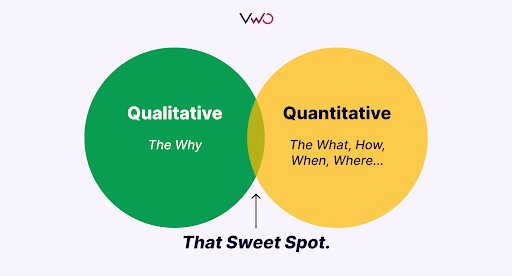
4. Qualitative insights
Beyond the numerical insights on conversion rates, qualitative data is equally crucial. It provides
a. Contextual understanding
Visitor feedback, user testing observations, and customer reviews provide the context behind the numbers and explain the reasons behind user actions.
b. Behavioral insights
Qualitative data offers a window into the user experience, highlighting user likes, dislikes, and preferences.
c. Actionable feedback
Provides actionable insights that can guide website design, content, and functionality improvements, directly addressing user needs and enhancing the user journey.
d. Analyzing test results
Analyzing the results of A/B tests, regardless of their outcome, is crucial for refining your conversion rate optimization (CRO) strategy. Every test, whether successful or unsuccessful, offers valuable insights.
e. Failed tests
By carefully analyzing data, you can identify the reasons behind the failure, such as an inaccurate hypothesis, external influences, or implementation issues. These insights allow you to refine your hypothesis and strategy for future tests, better aligning them with your target audience.
f. Successful tests
A successful test is undoubtedly a win, but the analysis shouldn’t just end there. Exploring the reasons for its success, especially for specific audience segments, can be highly beneficial. This knowledge empowers you to personalize the user experience. For instance, if a website modification appeals strongly to a specific age group, you can leverage this insight to tailor their experience further, potentially boosting future conversion rates from this demographic.
In both cases, analyzing results helps you to tailor experiences for various user groups, improving their engagement and subtly enhancing your conversion rate optimization efforts, making the website more effective at engaging and converting visitors.
5. Competitor CRO analysis
Assessing your conversion rates against competitors is essential for revealing your market position, identifying optimization potential, and shaping strategies for targeted enhancements.
- Evaluate your overall conversion rate benchmark by industry.
- Conduct thorough research on your competitors to discover successful strategies that work for them and test them on your digital properties for valuable optimization insights.
- Implement well-established best practices and verify their effectiveness with A/B testing to ensure the strategies work well in practice, not just in theory.
CRO analysis tools
Thankfully, you don’t need fancy gadgets to analyze your CRO. Free tools like Google Analytics provide primary traffic and conversion data, while VWO Insights lets you visualize user behavior through its multiple tools. Remember, the right tool depends on your budget and the complexity of your website or mobile apps.
Let’s explore some CRO analysis tools that can significantly impact your site’s user experience and conversion effectiveness:
Web analytics
Web analytics tools like Google Analytics unlock website performance insights, including organic traffic sources and user behavior. By analyzing metrics like search engine results page (SERP) ranking, bounce rate, and conversion rates, you can identify areas for improvement and optimize your site for both search engines and user engagement, driving success.
Heatmaps
Discover user engagement patterns by tracking clicks, scrolls, and exit points across your website. Heatmaps provide visual representation by illuminating which areas attract attention and pinpointing areas for improvement, guiding targeted improvements to make the website more user-friendly and engaging and increase conversion rates.
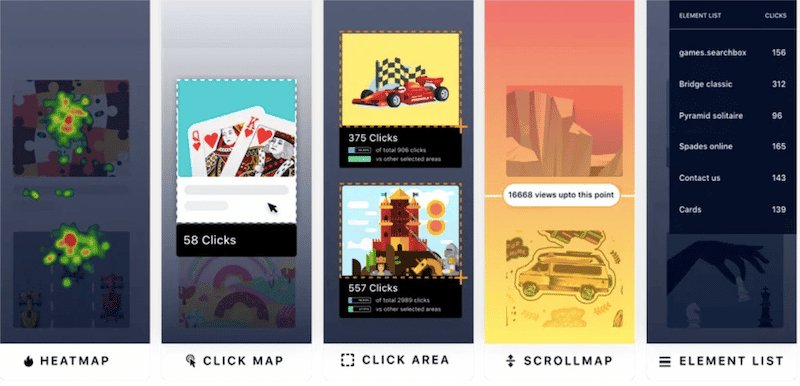
Session recordings
Analyze recordings of actual user sessions to spot user experience (UX) issues and navigation problems firsthand. This tool provides a unique perspective on the user experience, highlighting usability issues and opportunities for optimization to improve the site’s overall effectiveness and boost conversion rates.
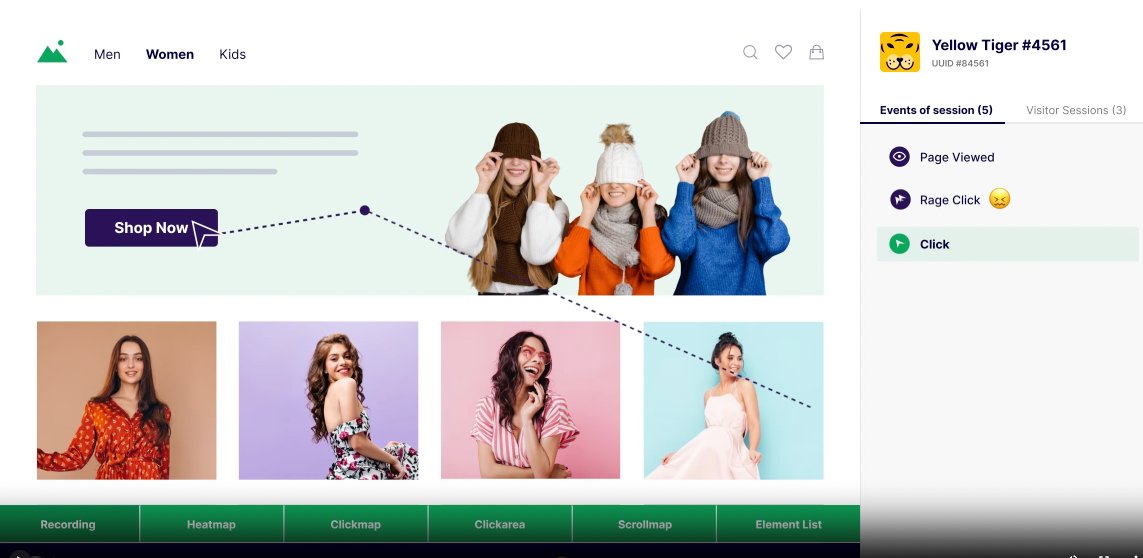
User flows
User flows help map out your users’ journey from entry to exit or conversion, highlighting the user’s journey and identifying common drop-off points. Analyzing these flows helps uncover friction in the navigation experience, guiding optimizations that streamline paths to conversion and enhance overall site usability.
Testing tools
Leveraging testing tools to continuously experiment with multiple variations of landing pages, calls to action, and other vital elements is essential for a truly optimized website that converts visitors into customers.
By taking a data-driven approach, you avoid guesswork and use factual evidence to make improvements, ensuring your website effectively leads website visitors to the desired actions.
A/B testing
Start with A/B testing, a straightforward yet powerful tool for comparing two versions of a single element. This could be as simple as testing two headlines or call-to-action buttons to see which leads to higher engagement and conversions.
A/B testing provides precise, actionable data, allowing you to make evidence-based decisions that enhance your site’s performance.
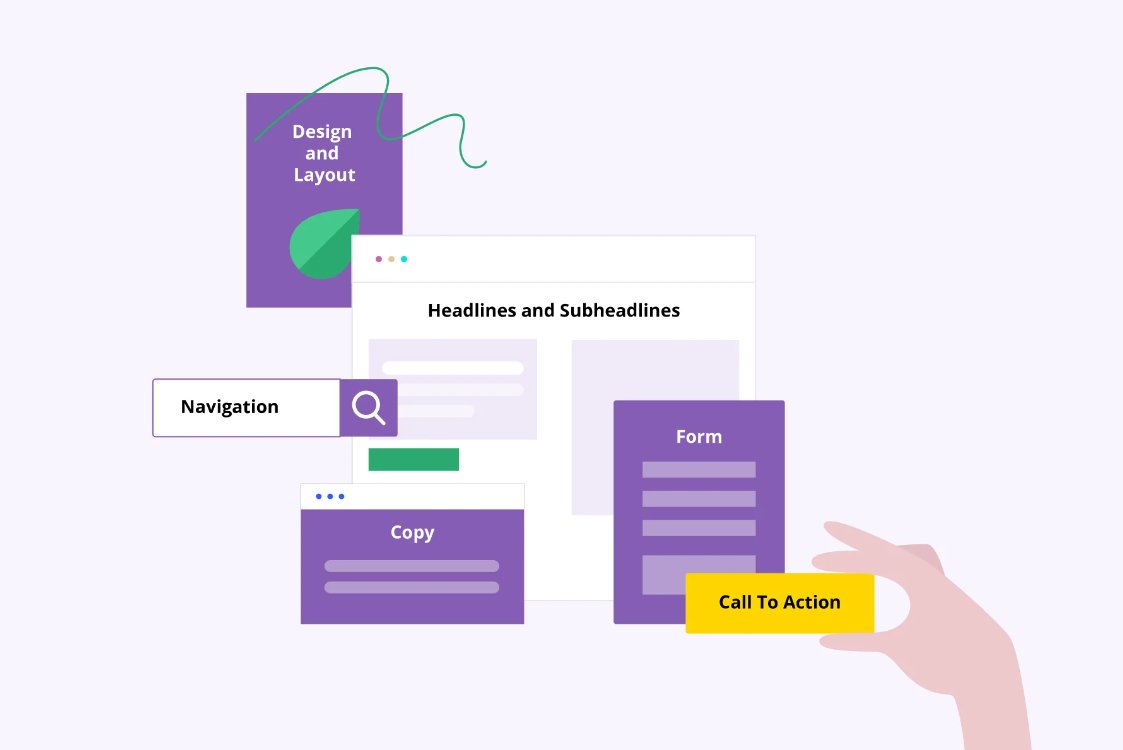
Multivariate testing for deeper insights
To understand how different elements on your page work together, multivariate testing is the next step. This method lets you test multiple changes at once to see how they collectively impact user behavior and conversion rates. It’s more complex but can provide valuable insights into how to improve your website.
CRO analytics
With platforms like Google Analytics, set up dashboards to monitor essential metrics such as conversion rates, bounce rates, and average time on page. These dashboards help you stay on top of your site’s performance, making it easier to spot trends and make timely adjustments.
Customer analytics
Engage directly with your customers through surveys, feedback, or interviews to gain qualitative insights and better understand their needs, frustrations, and suggestions for improvement.
This analysis enables a more personalized and effective optimization strategy to enhance the customer experience and increase conversion rates by addressing specific needs and obstacles encountered by users.
CRO analysis success stories
Understanding the principles of CRO is one thing, but witnessing its application and impact is another. Discover how VWO has helped companies like yours successfully harness CRO analysis’s power to transform their websites from traffic hubs to conversion powerhouses.
These examples provide tangible insights into optimizing for better conversion rates and user experiences, showing you the achievable results of well-executed CRO efforts.
Elegant Steps: Tripling mobile conversion rates with VWO
Elegant Steps, a top choice for wedding shoes in the UK, identified a gap in mobile user engagement and optimized its mobile site to more effectively cater to its predominantly female, bride-to-be customer base.
The challenge
The mobile site’s conversion rate was significantly lower than the desktop’s, converting at only 0.6% compared to the desktop’s 2%. This discrepancy highlighted a pressing need for mobile-specific optimization.
Data-driven analysis
A deep dive into Google Analytics (GA) data, complemented by VWO’s scrollmaps and heatmaps, revealed critical insights such as the underutilization of the “Shop by Brand” section due to its placement and the invisibility of crucial Unique Selling Propositions (USPs) such as free shipping on mobile screens.

Optimization strategy
The optimization efforts included a comprehensive mobile home page redesign- repositioning the Shop by Brand section, making the free shipping USP more visible, personalizing the CTA, and enhancing text legibility on the home page.

Effective implementation
These changes specifically targeted mobile users, leveraging VWO’s advanced targeting capabilities and tests powered by a Bayesian statistics engine to assess the impact of these strategic modifications.
Outstanding results
The initiative quickly led to notable improvements, increasing mobile conversion rates by 200%. This significant boost highlighted the effectiveness of the targeted changes, resulting in a substantial uplift in mobile conversions and a notable decrease in bounce rate by almost 50%.
Reflections on success
The Elegant Steps success story demonstrates how tailored, data-driven optimization strategies can significantly transform mobile engagement and conversion, setting a new benchmark for e-commerce excellence in the wedding industry.
Lyyti’s pricing page revamp leads to significant conversion growth
Lyyti, a Finland-based event management software provider, engaged VWO to optimize its website for better conversion rates. The goal was to elevate the number of visitors engaging with the “Free Trial” CTA on its pricing page, which was identified as a critical area for improvement.
Insights from VWO’s heatmaps and click maps revealed a pattern: visitors frequently toggled between the pricing and features pages, indicating the original pricing page might not have effectively communicated the value of Lyyti’s plans.
In response, Lyyti redesigned the page to display plan features more prominently and introduced multiple CTAs to encourage free trial sign-ups, streamlining the page’s focus toward trial conversion.
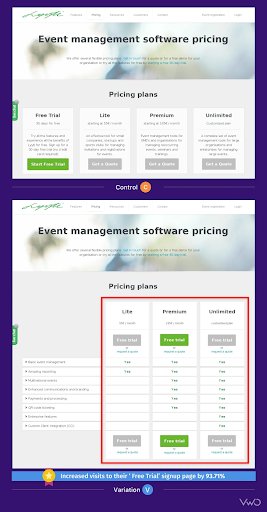
This refined approach, validated through meticulous A/B testing over five months, led to a notable 93.71% rise in clicks to the lead generation page, proving the value of a focused, user-friendly page design in boosting conversion rates.
The Lyyti success story highlights the impact of targeted website optimizations in enhancing user engagement and conversion, pointing to the essential role of straightforward design and messaging in achieving positive outcomes.
The future of CRO analysis: AI, machine learning, and the power of personalization
CRO analysis is no longer just about numbers and reports. CRO analysis is evolving rapidly, fueled by advances in artificial intelligence (AI) and machine learning (ML). These technologies are poised to unlock a future of data-driven insights, real-time optimization, and hyper-personalized experiences, ultimately driving conversions.
Let’s explore some exciting trends shaping the future of CRO analysis:
AI and ML-powered insights
Imagine a world where AI swiftly and smartly analyzes data and spots trends. That future is now. AI and machine learning dive deep into data, identifying patterns we might miss and offering precise optimization suggestions. They even predict what users might do next, allowing businesses to be one step ahead in meeting customer needs.
For example, an AI-powered tool could analyze a user’s browsing history and recommend relevant products with high conversion potential, significantly boosting sales.
Predictive analytics and micro-targeting
ML algorithms can predict user behavior with surprising accuracy, reshaping how businesses approach conversion rate optimization (CRO). This allows for proactive optimization based on predicted actions rather than simply reacting to past data, improving user experiences and conversion rates.
Real-time personalization and A/B testing
Picture a website that automatically adjusts its features, like headlines and images, to fit each visitor’s preferences. This level of personalization can lead to a more engaging and relevant experience that’s far more likely to lead to a conversion.
ML-powered A/B testing tools can analyze countless variations simultaneously, identifying the optimal combination for each user in real time. This eliminates the need for traditional A/B tests, saving time and resources.
Deep learning for deeper insights
Deep learning takes us closer to understanding user intent and emotion. Analyzing text and images to mimic human brain processing offers a richer perspective on what makes users tick, leading to experiences that truly resonate.
The way forward
The future of CRO is bright, with AI and personalization opening up thrilling opportunities. By engaging in CRO analysis that is deeply rooted in data, using tools ethically, and keeping user experience at the core, you can create visually appealing websites that are highly effective in driving conversions. So, get ready to dive into the data-driven future of CRO and unlock the full potential of your website!
Ready to take action?
Start your free trial of VWO today and access its powerful insight tools and testing features designed to elevate your conversion rate optimization efforts.











